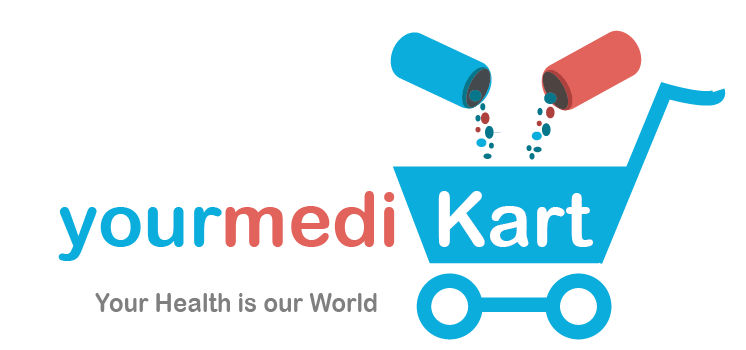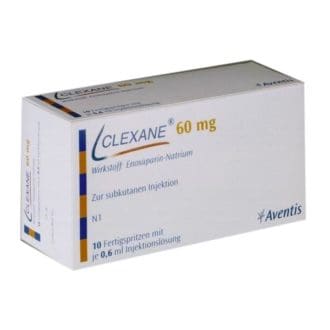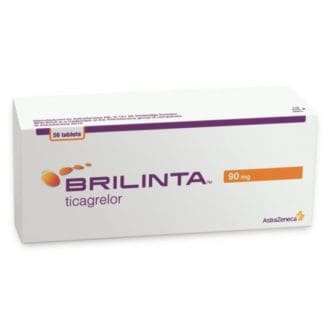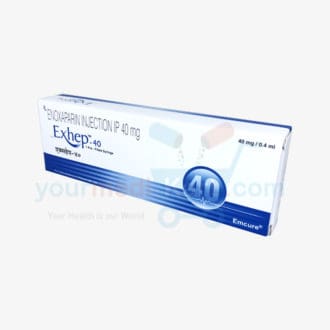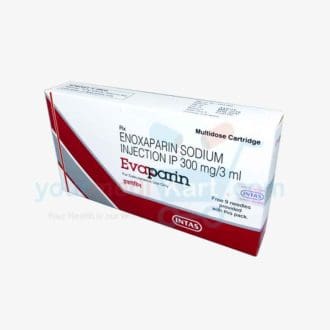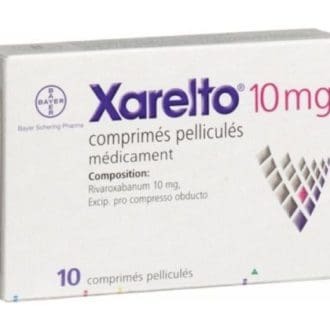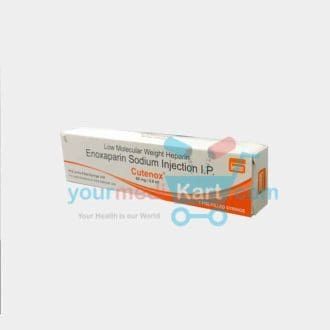Clexane 40mg, 60mg Injection clexane injection price
AVENTIS PHARMA LTD
GENERIC NAME : ENOXAPARINE SODIUM
Clexane is basically the brand name for Enoxaparin sodium, which is basically an anticoagulant (blood thinner). It serves the purpose of reducing coagulation of blood, prolonging the clotting time. In layman’s terms, Clexane is use for stopping the blood clots to form within the blood vessels. Clexane is use to serve a few major purposes. From treating blood clots to treating for heart borne diseases like heart attack to also coming handy after surgeries, mainly in avoiding blood clot formation, clexane has its own purpose to fulfill.
Who Is It For
There are a few categories which should refrain from using Clexane. Some of them are: –
Kids / People under the age of 18
- People over the age of 80
- People who have recently undergone a surgery
- Diabetic patients
- Patients with a history of blood disorders
- Patients who have troubles stopping bleeding
- People who are significantly
- People with kidney troubles
- People with decrease liver function
- Hyperkalemics
- Pregnant or breastfeeding ladies
Drug Administration
Clexane is administer by injection under the skin of the abdomen or into the tubing of dialysis machine once a day. Depending on the condition of the patient and relevant vitals such as weight, the amount of dosage is derived. The usual dosage method clexane brand name is simple, for patients who are moderately at risk, 20mg is provide once a day. For the high-risk patients, 40mg is provided. It must be note that it is essential to have regular blood tests during this treatment in order to regularly monitor the vitals of the patient. In case the treatment lasts for more than 7 days, the health care provider may also keep a tab on the potassium levels in the patient’s blood.
Side Effects
Like every pharmaceutical drug, Clexane comes with its fair share of side effects. Since it focuses on treating serious conditions, it also makes the body vulnerable. Some of the major side effects include: –
- Bleeding from gums
- Nosebleeds
- Coughing or vomiting blood
- Pain/irritation in the inject area
- Haematoma – blood clots forming a solid swelling in the inject area
- Decrease in platelet count.
- Haemorrhage
- Necrosis in the area injected.
- Hyperkalaemia
- Blood Clots in the spinal cord
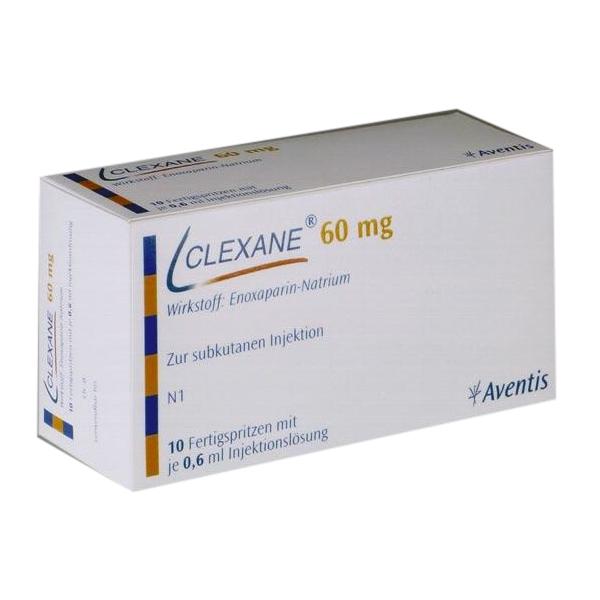
Basic Do’s and Don’ts
There are some self care and precaution tips that everyone can and must follow.
- This one goes without saying, but one must use Clexane only under the guidance of a health care professional, and the dosage must be as prescribed.
- In case the patient has an artificial heart valve, or a stent in their heart, the health care professional must inform about it.
- If the patient is to start any new medicine, the doctor must be inform and consult with.
- If a lady becomes pregnant while using clexane, the doctor must be inform and appropriate actions must be take.
- The doctor must be inform about any allergic reactions, especially to Heparin.
- One must not give Clexane to anyone else, even if the other person has the same disorder. Clexane must only be prescribe by a certified doctor.
- Thorough consultation is suggest for patients who’re using Clexane.
- One must not self regulate the dosage, or the time gap between dosages.
- Clexane must not be mix or use with any other drug or injection, unless it’s prescribe that way.
- Any complication must be discuss with the doctor as soon as it is identified.
- Clexane must not be inject into the muscle.
Clexane is available in a few forms to pick from, like, injection, prefill syringes and graduate prefill syringes. We at Your Medikart understand that people with different needs must get different options to choose from. Our certified partners ensure that the prescribe drug you require reaches your doorstep without any hindrance.
Clexane (enoxaparin)
Clexane injection contains the active ingredient enoxaparin, which is a type of medicine called a low molecular weight heparin. It is used to stop blood clots forming within the blood vessels.
What is Clexane use for?
- Treating blood clots in the veins of the leg (deep vein thrombosis).
- Treating blood clots in the lungs (pulmonary embolism).
- Preventing these types of blood clots (thromboembolic disorders), particularly following general surgery or surgery on the bones (orthopaedic surgery), or in people bedridden due to illness.
- Treating blood clots in the coronary arteries in unstable angina and heart attack (myocardial infarction).
- Preventing blood from clotting when it is filter through an ‘artificial kidney’ (haemodialysis) machine as part of the management of kidney failure.
How does Clexane work?
Clexane injection contains the active ingredient enoxaparin, which is a type of medicine called a low molecular weight heparin. It stops blood clots forming inside the blood vessels.
Blood clots normally only form to stop bleeding that has occur as a result of injury to the tissues. The clotting process is complicate and begins when blood cells call platelets clump together and produce chemicals that activate the clotting process. The final part of this process involves a substance call thrombin being activate to produce a protein call fibrin. Fibrin binds the platelets together, forming a blood clot. This is the body’s natural way of repairing itself.
Clexane 40mg
- Sometimes, however, a blood clot can form abnormally within the blood vessels. This is known as a clexane injection price thrombus. It can be dangerous because the clot may detach and travel in the bloodstream, where it becomes known as an embolus. The embolus may eventually get lodge in a blood vessel, thereby blocking the blood supply to a vital organ such as the heart, brain or lungs. This is known as a thromboembolism.
- Some people have an increase tendency for blood clots to form within the blood vessels. This is usually due to a disturbance in the blood flow within the blood vessels. For example, in coronary artery disease, fatty deposits (atherosclerosis) on the walls of the coronary arteries can disrupt the blood flow, clexane injection price giving a tendency for clexane 60mg platelets to clump together and start off the clotting process. When a clot has form in a coronary artery this reduces the flow of blood to the heart and causes chest pain (angina). It can also result in a heart attack.
- Slow blood flow in the leg and pelvic veins can also result in clots forming in clexane injection price these veins (deep vein thrombosis). These clots can break off and travel to the lungs (pulmonary embolism). Being immobile for long periods of time, for example due to a severe medical condition or following surgery. Clexane 60mg can increase the risk of these types of blood clot, as can pregnancy, obesity and certain blood disorders.
- Enoxaparin can prevent and treat these types of abnormal blood clots. It works by inactivating thrombin clexane 40mg in the clotting process describe above. This stops the formation of fibrin, the essential component of blood clots.
How is Clexane given?
- Clexane is administered by injection under the skin of the abdomen (subcutaneous injection).
- The dose and length of treatment used will depend on the nature of the clot being treated or prevented.
Important information about Clexane
- During treatment with this medicine, you may need to have regular blood tests to monitor the numbers of blood cells called platelets in your blood.
- Your doctor may also want to monitor the level of clexane 60mg potassium in your blood clexane 60mg while you are having this medicine, particularly if treatment lasts for longer than seven days.
Clexane should be used with caution in
- People over 80 years of age.
- People with decreased kidney function or chronic kidney failure.
- People with decreased liver function.
- People who have previously developed a reduced platelet count in the blood due to treatment with heparin or low molecular weight heparin (heparin-associated thrombocytopenia).
- People with problems stopping bleeding.
- People with a history of peptic ulcer.
- People who have recently had a stroke caused by a blood clot in the brain (ischaemic stroke).
- Severe uncontrolled high blood pressure (hypertension).
- Diabetes.
- People with diabetes affecting the eyes (diabetic retinopathy).
- People who have recently had eye surgery.
- People who have recently had surgery on the brain or spinal cord (neurosurgery).
- People having spinal or epidural anaesthesia.
- People with a high level of potassium in their blood (hyperkalaemia).
- People with increased acidity in their blood (metabolic acidosis).
Clexane should not be used in
- People who are allergic to heparin or other low molecular weight heparins.
- People with a bacterial infection of the heart valves and the clexane 60mg lining surrounding the heart (bacterial endocarditis).
- People with active major bleeding.
- People with conditions that carry a high risk of uncontrolled bleeding, for example clexane 40mg the blood clotting disorder haemophilia, a peptic ulcer, a recent stroke caused by bleeding in the brain (haemorrhagic stroke) or a reduced platelet count in the blood (thrombocytopenia).
- This medicine is not recommend for use in children.
- This medicine is not recommend for preventing blood clots in clexane injection price, clexane 60mg people with an artificial heart valve.
This medicine should not be use if you are allergic to one or any of its ingredients. Please inform clexane anticoagulant your doctor or pharmacist if you have previously experienced such an allergy.
If you feel you have experienced an allergic reaction, stop using this medicine and inform your doctor or pharmacist immediately.
Pregnancy and breastfeeding
Certain medicines should not use during pregnancy or breastfeeding. However, other medicines may be safely use in pregnancy or breastfeeding providing the benefits to the mother outweigh the risks to the unborn baby. Always inform your doctor if you are pregnant or planning a pregnancy, before using any medicine.
- This medicine is not license for use during pregnancy. However, clexane 60mg the medicine does not cross the placenta and so does not enter the baby’s bloodstream. It is not know to be harmful if use during pregnancy. Low molecular weight heparins clexane injection price such as this one is often used to prevent and treat blood clots in pregnant women. However, the medicine is not recommended for preventing blood clots in pregnant women with artificial heart valves, because there is insufficient clexane 40mg information regarding its use in this particular case. Seek further medical advice from your doctor.
- This medicine has not been studied in women who are breastfeeding. However, it is unlikely to pass into breast milk and even if it did, it would be inactivated in the gut of the baby. The medicine is not expected to be harmful to a nursing infant if it is used to treat mothers who are breastfeeding. Seek further medical advice from your doctor.
Possible side effects of Clexane
Medicines and their possible side effects can affect individual people in different ways. The following are some of the side effects that are know to be associate with this medicine. Just because a side effect is state here does not mean that all people using this medicine will experience that or any side effect.
- Bleeding. It is important to tell your doctor straight clexane anticoagulant away if you notice any signs of bleeding while you are receiving treatment with this medicine, for example nosebleeds, bruising, coughing up or vomiting blood, blood in your urine, or black, tarry or bloodstained stools.
- Pain and irritation at the injection site.
- Blood clots which form a solid swelling at the injection site (haematoma).
- Decrease in the number of platelets clexane generic name
- in the blood (thrombocytopenia).
- Major bleeding (haemorrhage), for example in the abdomen or inside the skull.
- Alteration in results of liver function tests.
- Raised blood potassium level (hyperkalaemia).
- Death of skin cells (necrosis) at the site of injection.
- Blood clots in the spinal cord (intraspinal haematoma) in people also having spinal or epidural anaesthesia.
- Osteoporosis (a reduction in bone density leading to bones which may fracture easily) has occurred clexane 40mg after long-term treatment with a similar medicine called heparin. Although this observe in people treated with Clexane, it is possible that this could happen with Clexane.
Side Effects
The side effects listed above may not include all of the side effects reported by the clexane 60mg medicine’s Manufacturer. Clexane 40mg For more Information about any other possible risks associated with this medicine, please read the information provided with the medicine or consult your doctor or Pharmacist.
If you think you have experienced a side effect from a medicine or vaccine, clexane 60mg you should check the patient Information leaflet. This lists the know side effects and what to do if you get them. You can also get advice from your doctor, clexane injection price nurse or Pharmacist. If they think it’s necessary, they’ll report it for you.
Can I use other medicines with Clexane?
It is important to tell your doctor or Pharmacist what Medicines you are already taking, including those bought without a Prescription and clexane injection herbal medicines. Clexane injection before you start treatment with this medicine. Similarly, check with your doctor or Pharmacist before taking any new medicines clexane 40mg while having treatment with this one, to make sure that the Combination is safe.
There may Increase risk of bleeding or Increase time take to enoxaparin stop Bleeding, if this medicine is clexane 40mg use in Combination with medicines that affect blood clotting, such as the following:
- Antiplatelet (‘blood-thinning’) medicines, such as aspirin, Dipyridamole, Clopidogrel
- Clot-busting medicines (fibrinolytics) such as Streptokinase, Alteplase
- Dextran
- Milepost
- Non-steroidal Anti-Inflammatory drugs (NSAIDs), such as Ibuprofen, Diclofenac, Naproxen (do not take this type of painkiller while you are having treatment with this medicine unless you have clexane antidote discussed it with a doctor or pharmacist first)
- Oral Anticoagulants, such as Warfarin, Nico Malone, Phenindione, Dabigatran, Rivaroxaban, Apixaban.
There may an Increase risk of a rise in the amount of Potassium in your blood clexane 40mg if this medicine is use in combination with any of the following:
- ACE Inhibitors, eg Captopril, Lisinopril
- Aliskiren
- Ciclosporin
- Potassium-Sparing Diuretics, eg Spironolactone, Triamterene, Amiloride
- Potassium Supplements
- Potassium-Containing salt Substitutes.
The amount of Potassium in your blood should regularly clexane inj clexane pharmacological name anticoagulant Monitor clexane 40mg if you are taking any of these during treatment with this medicine.
Clexane, known generically as enoxaparin, is a widely used anticoagulant medication designed to prevent and treat blood clots. Enoxaparin works by inhibiting factors that contribute to blood clotting, making it an essential treatment for conditions like deep vein thrombosis (DVT) and pulmonary embolism, as well as for preventing clotting complications in people undergoing certain types of surgeries.
Clexane Injection
As an anticoagulant Clexane is administered through Clexane injection, typically at sites recommended for subcutaneous injections such as the abdominal area. The Clexane injection uses extend to preventing clotting in extracorporeal circulation during hemodialysis sessions as well. The Clexane dose varies depending on the patient’s condition and body weight, commonly ranging from Clexane 40mg for prophylactic measures to higher doses like Clexane 50mg for therapeutic purposes.
Clexane antidote, which is protamine sulfate, can reverse the effects of the medication in cases of excessive anticoagulation or bleeding. Patients and caregivers need to be familiar with how to give Clexane injection to ensure proper administration, especially when used long-term in a home setting.
Clexane ingredients ensure its efficacy as an anticoagulant, and it’s also available under different brand names, which might reflect in variations like Clexane brand name or Clexane trade name. The cost can vary, often reflected in listings like Clexane injection price.
For detailed dosing guidelines, including Clexane injection dose and administration techniques, consulting with a healthcare provider is crucial. This ensures safe and effective use, particularly in sensitive situations like Clexane injection uses in pregnancy.
